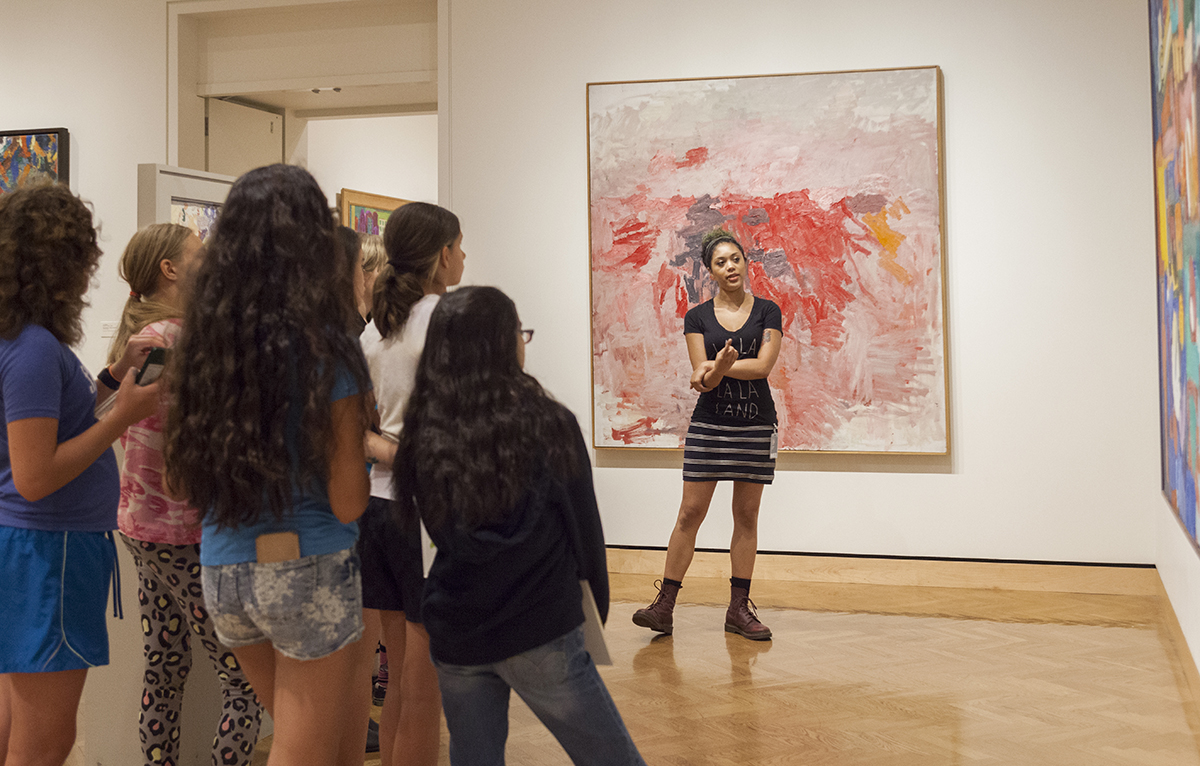Balance information and inquiry
Ultimately, it is up to each docent or guide to determine the balance between information and inquiry on a tour. A well-balanced tour offers information that supports visitors’ comments and encourages further observations and questions; the visitors’ observations should inform the facts given during the tour.
Most often, information is best given after visitors have been allowed time to observe and discuss the work of art. You will be surprised at how much visitors will be able to tell you about objects and cultures by what they observe. People are more likely to learn if they have invested their own time, energy, and thoughts in the discussion. However, if an object is open to cultural misinterpretation, introduce some relevant information at the beginning of the discussion. For example, to avoid misinterpretation, you might begin a discussion of the Kongo Power Figure with, “This nail figure is valued for the good power it brings to the community. What about this figure looks powerful to you?”
By balancing inquiry and information based on the group’s interest and observations, you continually challenge deeper looking and meaning.
